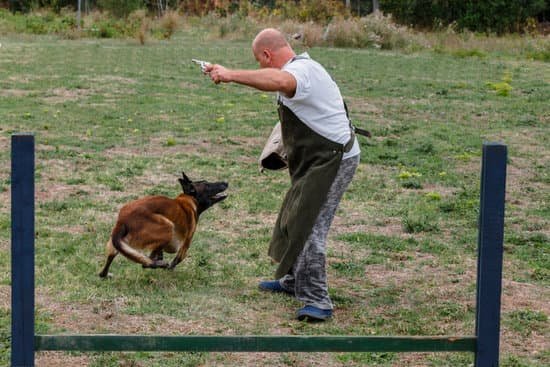Training a fearful dog to become a protection dog can be a challenging but rewarding journey for both you and your furry companion. Dogs exhibit fear for various reasons, but with the right approach and training techniques, you can help your dog overcome their anxieties and fears. Understanding the underlying reasons for your dog’s fearful behavior is crucial in tailoring an effective training plan that will transform them into a confident and capable protection dog.
Assessing your dog’s suitability for protection training is the first step in the process. Not all dogs are cut out for this type of work, especially those with extreme fear issues. It is important to evaluate your dog’s temperament, previous training experiences, and overall health before embarking on protection training.
Building trust and a strong bond with your fearful dog is essential to successful training. Patience, consistency, and positive reinforcement are key components in gaining your dog’s trust and helping them feel secure in their environment.
Basic obedience training provides a solid foundation for any protection dog. Teaching simple commands like sit, stay, come, and heel not only helps control your dog’s behavior but also boosts their confidence. Desensitization and counterconditioning techniques can be effective tools in changing how your fearful dog perceives certain stimuli or situations that trigger their anxiety. By gradually exposing them to these triggers while providing positive experiences, you can help reduce their fear responses over time.
Assessing Your Dog’s Suitability for Protection Training
When considering how to train a fearful dog into a protection dog, it is crucial to first assess whether your canine companion is suitable for this type of training. Not every dog is cut out for protection work, especially if they display extreme fear or aggression. It is essential to evaluate your dog’s temperament, history, and behavior before embarking on protection training.
One way to determine if your dog is suitable for protection training is by observing their reactions in various situations. A fearful dog may exhibit signs of stress, such as cowering, trembling, excessive panting, or avoidance behaviors. On the other hand, a dog with a strong potential for protection work may display confidence, alertness, and a willingness to defend its territory or family.
Additionally, seeking the guidance of a professional trainer or behaviorist can help you assess your dog’s suitability for protection training. These experts can conduct temperament tests and provide valuable insights into your dog’s behavior. Remember that not all fearful dogs can be trained as protection dogs, and it is essential to prioritize your pet’s well-being and comfort throughout the training process.
| Suitability Factors | Assessment Findings |
|---|---|
| Temperament | Observation of behavior in various situations |
| Professional Guidance | Consultation with trainer or behaviorist |
Building Trust and Bond With Your Fearful Dog
Understanding Your Dog’s Fear
Before diving into training your fearful dog to become a protection dog, it is crucial to understand the root of their fear. Fear in dogs can stem from various sources such as past traumatic experiences, lack of socialization, or genetics. By identifying the triggers that cause fear in your dog, you can tailor your training approach to address these specific issues effectively.
Creating a Safe Environment
One of the first steps in building trust with a fearful dog is creating a safe and secure environment for them. Providing a designated space where your dog feels comfortable and can retreat to when feeling overwhelmed is essential. Avoid exposing your dog to situations that trigger their fear unnecessarily and instead focus on gradually introducing them to new experiences at their own pace.
Positive Reinforcement and Patience
When working with a fearful dog, positive reinforcement techniques are key to building trust and confidence. Rewarding desired behaviors with treats, praise, or toys helps create a positive association with training sessions. Additionally, patience is crucial when training a fearful dog as progress may be slow at times. Consistent reinforcement of good behavior and avoiding punishment will help build trust between you and your furry companion.
By taking the time to understand your fearful dog’s triggers, creating a safe environment, using positive reinforcement techniques, and practicing patience, you can begin laying the foundation for successful protection training. Establishing a strong bond built on trust is essential before proceeding to more advanced protection exercises for your furry friend.
Basic Obedience Training for Fearful Dogs
Training a fearful dog to become a protection dog requires patience, understanding, and tailored training techniques. Basic obedience training is a crucial foundation for developing a strong bond with your dog and establishing trust. Here are some key steps to start the process of training your fearful dog:
- Start with Positive Reinforcement: Use treats, praise, and rewards to encourage desired behaviors in your dog. Positive reinforcement helps build confidence and motivation in fearful dogs.
- Focus on Basic Commands: Teach your dog basic commands such as sit, stay, come, and heel. Consistent practice and positive reinforcement will help your dog feel more secure and in control during training sessions.
- Set Realistic Goals: Understand that progress may be slow with a fearful dog, so set achievable goals for each training session. Celebrate small victories and be patient with your pet’s learning pace.
Once your dog has mastered basic obedience commands, you can gradually introduce more advanced training exercises tailored to their specific needs and temperament. Regular practice, consistency, and positive reinforcement are essential in building a strong foundation for protection dog training. Remember to always prioritize your dog’s well-being and comfort throughout the training process.
- Gradually Introduce Distractions: Start by practicing basic obedience commands in different environments with distractions to help desensitize your dog to unfamiliar stimuli.
- Work on Focus and Impulse Control: Teach your dog to maintain focus on you even in challenging situations. This skill is crucial for protection dogs to respond effectively to commands under pressure.
- Seek Professional Guidance: Consider enlisting the help of a professional trainer experienced in working with fearful dogs. A skilled trainer can provide guidance on how to tailor training techniques to suit your dog’s individual needs.
Desensitization and Counterconditioning Techniques
Understanding Desensitization and Counterconditioning
Desensitization and counterconditioning are powerful techniques used to change a dog’s fearful response to a particular stimulus or situation. Desensitization involves exposing the dog to the trigger at a level where they do not exhibit fear or anxiety, gradually increasing exposure as they become more comfortable. Counterconditioning, on the other hand, involves changing the dog’s emotional response to the trigger by pairing it with something positive, such as treats or play.
Implementing Desensitization and Counterconditioning
When using desensitization and counterconditioning techniques with a fearful dog, it is essential to start at a level where the dog is just slightly uncomfortable but not overwhelmed. For example, if your dog is fearful of other dogs, you can start by having them at a distance where they notice but do not react negatively. Pair this exposure with something your dog loves, like treats or toys. Gradually decrease the distance over time as your dog becomes more relaxed.
Persistence and Patience in Training
Training a fearful dog into a protection dog through desensitization and counterconditioning requires persistence and patience. It is crucial to work at your dog’s pace and never force them into situations that cause fear or anxiety. Celebrate small victories along the way and remember that every step forward is progress towards building confidence in your canine companion. With consistent practice and positive reinforcement, you can help your fearful dog become a successful protection partner.
Introduction to Protection Dog Training
Training a fearful dog to become a protection dog requires a comprehensive understanding of the underlying reasons for their fear-based behavior. Fear in dogs can stem from various factors such as past traumatic experiences, lack of socialization, or genetics. It is crucial to identify the triggers that cause fear in your dog before embarking on protection training. By understanding the root cause of your dog’s fear, you can tailor the training program to address these specific issues effectively.
Before diving into protection training, it is essential to assess your dog’s suitability for this type of advanced training. Not all fearful dogs may be well-suited for protection work, as it can exacerbate their anxiety and fear responses.
It is important to work with a professional trainer experienced in handling fearful dogs to evaluate whether your canine companion has the temperament and drive required for protection training. Training a fearful dog into a protection dog requires patience, consistency, and specialized techniques to build their confidence gradually.
Building trust and a strong bond with your fearful dog is paramount before starting any protection training. Positive reinforcement techniques, such as using rewards like treats or favorite toys, can help create a positive association with training exercises and strengthen the bond between you and your furry friend.
Incorporating playtime and quality time spent together outside of training sessions can also help foster trust and communication with your fearful dog. These foundational steps are crucial in preparing your canine companion for the rigors of protection training and ensuring their success in becoming a reliable protector under challenging circumstances.
Building Confidence in Your Dog Through Training
Fearful dogs require special attention and patience when it comes to training, especially when the goal is to transform them into confident protection animals. Building confidence in your dog through training is a crucial step in the process of turning a fearful dog into a reliable protection dog. Here are some effective ways to help boost your furry companion’s self-assurance:
- Positive Reinforcement: Using treats, praise, and rewards can go a long way in boosting your dog’s confidence during training sessions. When your fearful dog successfully completes a task or displays bravery, make sure to offer plenty of encouragement and rewards.
- Consistent Training Routine: Establishing a consistent training routine helps create structure and predictability for your dog, which can reduce anxiety and build confidence over time. Set aside dedicated times each day for training sessions to help your dog feel secure and in control.
- Gradual Exposure to New Challenges: Slowly introducing your fearful dog to new challenges and environments can help them overcome their fears and build confidence. Start with small steps and gradually increase the difficulty of tasks as your dog becomes more comfortable and confident.
By incorporating these strategies into your training regimen, you can effectively help your fearful dog gain the confidence needed to excel in protection training. Remember that every dog is unique, so be patient and adapt your approach based on your dog’s individual needs and progress.
Advanced Protection Training Exercises for Fearful Dogs
Fearful dogs require specialized training when it comes to protection dog training. Once the foundation of trust and basic obedience has been established, advanced protection training exercises can be introduced. These exercises are designed to build upon the dog’s confidence, sharpen their skills, and prepare them for real-life protection scenarios. It is crucial to approach these exercises with caution and patience to ensure the safety and well-being of both the dog and their handler.
One important aspect of advanced protection training for fearful dogs is controlled aggression. This involves teaching the dog to distinguish between a real threat and a non-threatening situation. Properly channeling their natural instincts into focused aggression towards a target will help develop their protective abilities while maintaining control over their behavior. Training sessions should be carefully supervised to prevent any aggressive behavior towards unintended targets or situations.
Another key exercise in advanced protection training for fearful dogs is scenario-based training. This involves creating realistic scenarios that simulate potential threats or dangerous situations. By exposing the dog to different scenarios in a controlled environment, they can learn how to respond appropriately and protect their handler effectively. These scenarios should be gradually increased in complexity to challenge the dog’s skills while ensuring they feel confident in handling various situations.
| Aspect | Description |
|---|---|
| Controlled Aggression | Teaching the dog how to focus its aggression on targets in controlled environments. |
| Scenario-Based Training | Creating realistic scenarios to help the dog learn how to respond effectively in different situations. |
The Importance of Consistency and Patience in Training a Fearful Dog Into a Protection Dog
Training a fearful dog to become a protection dog requires a great deal of patience, consistency, and understanding. It is essential to recognize that fear-based behaviors in dogs can stem from various factors, such as past trauma, lack of socialization, or genetics. By understanding these underlying causes, you can tailor your training approach to address your dog’s specific needs effectively.
Assessing your dog’s suitability for protection training is crucial before diving into the process. Not all fearful dogs may be suited for protection work, as it requires a confident and stable temperament. Building trust and a strong bond with your fearful dog is the foundation for successful training. By establishing trust, you create a safe and secure environment for your dog to learn and grow.
Basic obedience training lays the groundwork for more advanced protection training exercises. Teaching your dog essential commands such as sit, stay, and come will not only improve communication but also boost their confidence. Desensitization and counterconditioning techniques can help reduce fear responses in your dog, making them more receptive to protection training. Through consistent practice and positive reinforcement, you can gradually introduce your fearful dog to protection exercises while building their confidence and skills.
Frequently Asked Questions
Can a Timid Dog Become a Guard Dog?
A timid dog can potentially become a guard dog with proper training, patience, and socialization. It is important to understand the individual characteristics of the dog and work with a professional trainer to build confidence and assertiveness.
How Do I Make My Dog a Protection Dog?
To make your dog a protection dog, it is crucial to start with basic obedience training to establish a strong foundation. Additionally, specialized protection training involving bite work, scent detection, and controlled aggression can help develop the necessary skills for protection work.
Can a Fearful Dog Be Rehabilitated?
Yes, a fearful dog can be rehabilitated through positive reinforcement training, behavior modification techniques, desensitization exercises, and patience. Building trust and confidence in the fearful dog is essential for successful rehabilitation. Consistency and understanding are key factors in helping a fearful dog overcome their anxieties.

Welcome to the blog! I am a professional dog trainer and have been working with dogs for many years. In this blog, I will be discussing various topics related to dog training, including tips, tricks, and advice. I hope you find this information helpful and informative. Thanks for reading!





